News
Potato Snacks – New Directions or More of the Same?
29 Jul 2013Efforts to innovate in increasingly competitive markets have resulted in increasing segmentation and blurring of traditional definitions in many food and drinks markets. While the consumer does not really care about this – only seeing a growing choice of formats – it may lead to difficulties with definition and research in some instances. The […]

Efforts to innovate in increasingly competitive markets have resulted in increasing segmentation and blurring of traditional definitions in many food and drinks markets. While the consumer does not really care about this – only seeing a growing choice of formats – it may lead to difficulties with definition and research in some instances.
The savoury snacks market, for example, continues to be difficult to define in the face of ongoing innovation that adds new categories and hybrids to the sector on a fairly regular basis. Some of these do not fall squarely into any one existing sub-category.
Potato-based snacks – called chips in most countries, but crisps in the UK – are the largest single category of the market in many territories, led by the US and the UK; definition issues here are becoming increasingly complex. The sector has long faced a question of whether potato snacks should be included in the chips/crisps market if they are not made with pure sliced potatoes. That would leave extruded and formed lines – perhaps most notably the stacked chips sector pioneered and dominated by Pringles, now part of Kellogg – sometimes categorised in the chips market, and sometimes not.
The arrival of another completely new type of snack in recent years – popped chips – has further complicated the issue. Made with potato flakes or pieces, popped chips are turned into crisps using heat and pressure, and are marketed as a guilt-free alternative to standard fried and baked products. The original Popchips potato-based brand was launched in the US in 2007 and saw sales more than double in 2011 to over USD30m. It claimed to represent the fastest growth rate among the top 50 snack brands over that year.
Following on from this success, popped chips arrived in Europe in 2012, with the UK launch of Popchips in March, featuring individual and sharing bags in five flavours. Again, these were promoted on their innovative production process and the fact that there were fewer than 100 calories in a single-serve bag.
The situation was further complicated with the arrival of another popped product. Promoted on a weight management positioning, Kellogg’s Special K Cracker Chips were introduced in the US in 2011. The launch moved the Special K cereals brand into savoury snacks for the first time, as well as moving it further out of the breakfast category and into the all-day convenience snacks sector.
The chips, claimed by Kellogg’s to have delivered 18% growth to its savoury snacks portfolio in the North America, were introduced in the UK as Special K Cracker Crisps in 2012. Made with potato, tapioca and wheat and in sea salt and balsamic vinegar, sweet chilli and sour cream and chive variants, the sour cream and chive is the only flavour duplicated from the US range, which also features sea salt, cheddar, honey barbecue and southwest ranch options.
And, even as I write, another new type of potato snack product is being introduced in the US. This time, it is bridging the gap between French fries and potato chips/crisps and is inspired by the foodservice sector. PepsiCo’s Fritolay’s Ruffles brand is being used for new Crispy Fries Potato Strips, which are claimed to be the first-ever French-fry-shaped snacks sliced from real potatoes. Launched in time for National French Fry Day in the US on July 13, the product claims to bring the French fry experience to life, including the shape, taste and crunchy texture. They are packaged for convenient on-the-go snacking, but can also be microwaved for a ‘straight-from-the-diner’ flavour.
One of the reasons that potato-based snacks are seeing so many new formats is the competition from other types of ingredients. Ongoing innovation in the snacks market has resulted in a growing range of ingredients and flavours being used, often in increasingly complex formulations. A review of recent new product activity by Innova Market Insights reveals that while potatoes, corn, wheat and soya continue to be key ingredients in snack foods, an increasing range of basic raw materials are now appearing as alternatives – either simply to add variety, or to give a healthier image, or even to allow gluten-free claims. Launches have included bread chips, pita chips, plantain chips, cassava chips and sweet potato chips, as well as products featuring a whole range of non-traditional ingredients in the form of different vegetables, including parsnips, beetroot and sweet potato, seeds and pulses.
Meanwhile, the traditional potato chips sector, featuring slices of potato, is continuing to develop, with ridge-cut products, hand-cooked ‘kettle’ lines and a raft of increasingly strong and complex flavours. These also have a perhaps somewhat contradictory focus on simplicity and naturalness of the product, including the use of just three ingredients – potatoes, oil and salt – in some instances. At the same time, there appears to be a growing focus on local ingredients and flavours on the one hand, and options based on international cuisines on the other.
Keeping a foot in both camps, launches by UK premium crisps company Burts over the past year or so have included flavours such as wasabi steak, spicy chorizo and Lincolnshire sausage and mustard. Rival company Tyrrells has launched a number of limited edition lines based on particular occasions, including beach barbecue flavoured with smoked paprika, tomato, cumin, cayenne and garlic and Cricket Tea crisps, featuring ham, cheese and tomato seasoned crisps in one bag. In France, Sibell has developed a range of unusual and upmarket flavours, adding typically French foie gras, bouillabaisse, bleu-noix and poivres lines to its existing range of truffle and wasabi variants.
Other interesting examples over the past year or so include Shamrock and Sour Cream chips in Ireland and Red, White and Blue crisps from Tyrrells in the UK which feature a patriotic mix of Highland Burgundy Red, White Lady Claire and Salad Blue potatoes to mark the Queen’s Diamond Jubilee. Meanwhile, looking forward, Intersnack’s funny-frisch brand in Germany already has an eye on the forthcoming Football World Cup in Brazil in 2014, launching three Brazilian-style flavour variants to the Chipsfrisch range and allowing consumers to vote for their favourite. The three variants are Grill de Brasil, Caipi Cabana and Salsa de Janeiro.
While the traditional potato chips/crisps market appears to be holding its own in the savoury snacks market – and indeed the snacks market as a whole – new types of product are continuing to appear, blurring definitions in the category as a whole. This is probably inevitable in the face of an increasingly competitive market place and the development of new technologies allowing the creation of a whole new raft of formats and flavours. It is, however, not necessarily a bad thing and has allowed the sector to continue to develop despite its relative maturity, a traditionally unhealthy image and growing competition from other savoury and sweet snack options. The consumer is continuing to see a growing range of formats for every occasion, offering something for everyone and the new and exciting alongside the favoured and familiar.
Related news
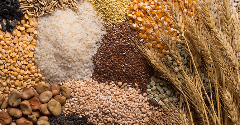
Sustainable grains present a healthy growth opportunity
3 Oct 2024
Food insights provider SPINS unveils the latest trends in the sustainable grains field, exploring how seven leading grains show healthy growth despite challenges in the global value chain.
Read more
Will we see a wave of NPD that focuses on insulin management?
1 Oct 2024
As a new study finds protein and fats can help manage insulin, food manufacturers are building on emerging GLP-1 platforms and supporting nutritional guidance.
Read more
New environmental food scoring standards emerge
30 Sep 2024
EIT Food and Foundation Earth collaborate to launch environmental food scoring for products entering the global supply chain.
Read more
Africa progresses with food transformation strategy
19 Sep 2024
Large-scale efforts are underway to drastically change the African food sector with a $61 billion (€55 bn) set of proposed transformation plans to be implemented across forty countries. Yet there are concerns that this initiative severely jeopardises s...
Read more
European Commission releases new supply chain recommendations
6 Sep 2024
The European Union’s (EU) legislative arm publishes its latest guidance on protecting the market’s food supply chain against current and future crises.
Read more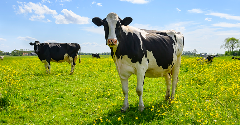
Tesco trials methane mitigation supplement for dairy cattle
5 Sep 2024
Tesco is trialing a methane-reducing feed supplement for one of its key UK dairy farms, sustainable UK milk producer Grosvenor Farms.
Read more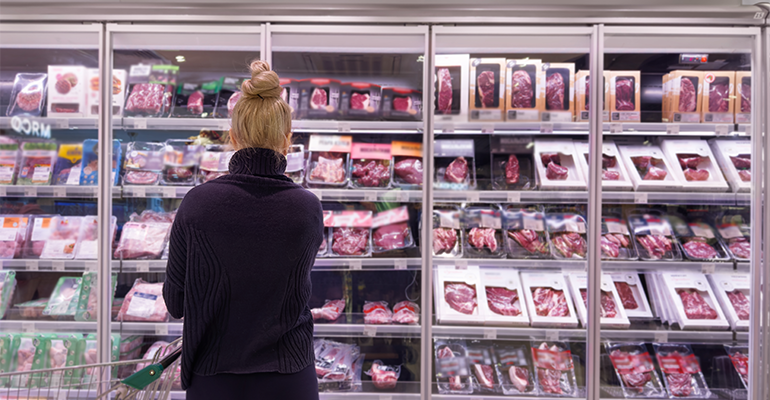
European consumers want more freedom to choose biotech-based food
3 Sep 2024
Survey findings point to growing levels of interest in cultivated meat as European consumers say they want the freedom to choose the lab-based products.
Read more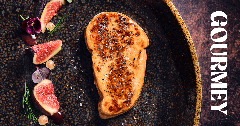
Will ‘foie gras’ become the EU’s first approved cultivated meat?
20 Aug 2024
French startup Gourmey has submitted its cultivated foie gras for approval in the European Union (EU), signalling the first application of its kind in the region.
Read more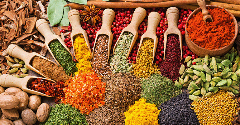
Europe gravitates to African spices
19 Aug 2024
Shipping delays, limited production output and climate change impact Europe’s spice supply, creating opportunities for African brands to enter the captive market.
Read more
Paris Olympics: Food and beverage brands champion health, fun, and sustainability
5 Aug 2024
Food and beverage brands are aligning with the Paris Olympics 2024 Food Vision, which emphasises sustainability, local sourcing, and plant-based diets.
Read more